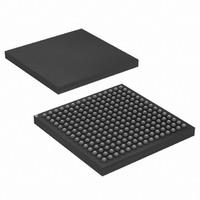AT91CAP7E-NA-ZJ Atmel, AT91CAP7E-NA-ZJ Datasheet - Page 367

AT91CAP7E-NA-ZJ
Manufacturer Part Number
AT91CAP7E-NA-ZJ
Description
MCU CAP7 FPGA 225LFBGA
Manufacturer
Atmel
Series
CAP™r
Specifications of AT91CAP7E-NA-ZJ
Core Processor
ARM7
Core Size
16/32-Bit
Speed
80MHz
Connectivity
EBI/EMI, FPGA, IrDA, SPI, UART/USART, USB
Peripherals
DMA, POR, PWM, WDT
Number Of I /o
32
Program Memory Size
256KB (256K x 8)
Program Memory Type
ROM
Ram Size
160K x 8
Voltage - Supply (vcc/vdd)
1.08 V ~ 1.32 V
Data Converters
A/D 8x10b
Oscillator Type
Internal
Operating Temperature
-40°C ~ 85°C
Package / Case
225-LFBGA
Processor Series
AT91Mx
Core
ARM7TDMI
Data Bus Width
32 bit
3rd Party Development Tools
JTRACE-ARM-2M, MDK-ARM, RL-ARM, ULINK2
Lead Free Status / RoHS Status
Lead free / RoHS Compliant
Eeprom Size
-
Lead Free Status / Rohs Status
Details
Available stocks
Company
Part Number
Manufacturer
Quantity
Price
- Current page: 367 of 520
- Download datasheet (11Mb)
Figure 29-26. Break Transmission
29.6.3.14
29.6.3.15
8549A–CAP–10/08
Baud Rate
TXEMPTY
US_CR
TXRDY
Clock
Write
TXD
Receive Break
Hardware Handshaking
Start
Bit
D0
D1
D2
STTBRK = 1
The transmitter considers the break as though it is a character, i.e. the STTBRK and STPBRK
commands are taken into account only if the TXRDY bit in US_CSR is at 1 and the start of the
break condition clears the TXRDY and TXEMPTY bits as if a character is processed.
Writing US_CR with the both STTBRK and STPBRK bits at 1 can lead to an unpredictable
result. All STPBRK commands requested without a previous STTBRK command are ignored. A
byte written into the Transmit Holding Register while a break is pending, but not started, is
ignored.
After the break condition, the transmitter returns the TXD line to 1 for a minimum of 12 bit times.
Thus, the transmitter ensures that the remote receiver detects correctly the end of break and the
start of the next character. If the timeguard is programmed with a value higher than 12, the TXD
line is held high for the timeguard period.
After holding the TXD line for this period, the transmitter resumes normal operations.
Figure 29-26
commands on the TXD line.
The receiver detects a break condition when all data, parity and stop bits are low. This corre-
sponds to detecting a framing error with data at 0x00, but FRAME remains low.
When the low stop bit is detected, the receiver asserts the RXBRK bit in US_CSR. This bit may
be cleared by writing the Control Register (US_CR) with the bit RSTSTA at 1.
An end of receive break is detected by a high level for at least 2/16 of a bit period in asynchro-
nous operating mode or one sample at high level in synchronous operating mode. The end of
break detection also asserts the RXBRK bit.
The USART features a hardware handshaking out-of-band flow control. The RTS and CTS pins
are used to connect with the remote device, as shown in
D3
D4
D5
D6
D7
illustrates the effect of both the Start Break (STTBRK) and Stop Break (STPBRK)
Parity
Bit
Stop
Bit
Break Transmission
STPBRK = 1
Figure
29-27.
End of Break
AT91CAP7E
367
Related parts for AT91CAP7E-NA-ZJ
Image
Part Number
Description
Manufacturer
Datasheet
Request
R

Part Number:
Description:
Customizable Microcontroller
Manufacturer:
ATMEL Corporation
Datasheet:

Part Number:
Description:
DEV KIT FOR AVR/AVR32
Manufacturer:
Atmel
Datasheet:

Part Number:
Description:
INTERVAL AND WIPE/WASH WIPER CONTROL IC WITH DELAY
Manufacturer:
ATMEL Corporation
Datasheet:

Part Number:
Description:
Low-Voltage Voice-Switched IC for Hands-Free Operation
Manufacturer:
ATMEL Corporation
Datasheet:

Part Number:
Description:
MONOLITHIC INTEGRATED FEATUREPHONE CIRCUIT
Manufacturer:
ATMEL Corporation
Datasheet:

Part Number:
Description:
AM-FM Receiver IC U4255BM-M
Manufacturer:
ATMEL Corporation
Datasheet:

Part Number:
Description:
Monolithic Integrated Feature Phone Circuit
Manufacturer:
ATMEL Corporation
Datasheet:

Part Number:
Description:
Multistandard Video-IF and Quasi Parallel Sound Processing
Manufacturer:
ATMEL Corporation
Datasheet:

Part Number:
Description:
High-performance EE PLD
Manufacturer:
ATMEL Corporation
Datasheet:

Part Number:
Description:
8-bit Flash Microcontroller
Manufacturer:
ATMEL Corporation
Datasheet:

Part Number:
Description:
2-Wire Serial EEPROM
Manufacturer:
ATMEL Corporation
Datasheet:











